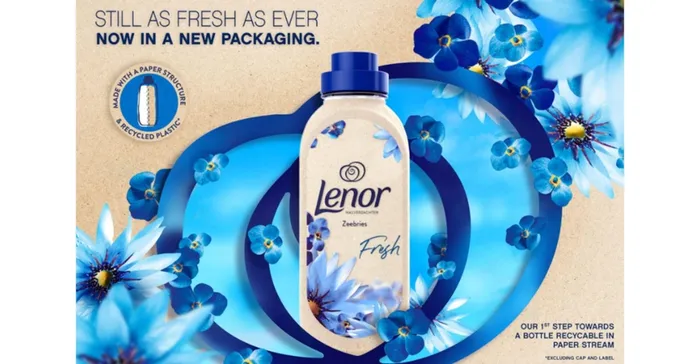Plastic or Paper? A Nuanced Sustainability Story
A report from Rabobank considers the environmental repercussions of moving from plastic packaging to paper, and more.

At a Glance
- Making the switch brings up cost, sustainability, and shelf-life issues
- Amazon, P&G, Unilever, and other global leaders switch from plastic to paper packaging
- US and EU legislation, and a UN draft treaty, target plastics sustainability and pollution reduction
A new report from Netherlands-based Rabobank highlights the trend of replacing plastic packaging with paper, reports on marine pollution and forever chemicals in packaging, and provides an update on plastic- and packaging-related legislation worldwide.
The report explains that “the sustainability of paper and pulp as a replacement for plastic may not be as straightforward as consumers perceive,” with cost, sustainability, and shelf-life concerns complicating the switch from plastic to paper.
Costs for pulp and paper packaging can be up to five times higher than plastic, the authors state, because more material and energy are required to create a sufficiently robust package.
Sustainability issues center on carbon footprint and end of life: Carbon emissions from paper production — including logging, pulping, and bleaching — often exceed emissions from plastics manufacturing. In addition, paper-based packaging can be difficult to compost or recycle if it contains protective coatings.
Additionally, paper-based packaging is not suitable for all consumer packaged goods (CPG). It’s inappropriate for perishable foods and those requiring barrier protection to extend shelf life.
CPG companies making the plastic-to-paper switch.
Despite the challenges, numerous global CPG companies have made the switch for at least some of their packaging. Amazon is making efforts in this direction, as well, using paper dunnage and, at one of its fulfillment centers, replacing plastic delivery packaging.
Among brand owners, Procter& Gamble switched to a paper bottle with plastic liner for Lenor fabric conditioner and to a paper canister for Old Spice deodorant.

PROCTER & GAMBLE
Nestlé switched to a recyclable paper wrapper for KitKat chocolate bars in Australia and did the same for Yes! snack bars.
Unilever has switched to paper packaging in product categories ranging from food to personal care. The company removed the outer layer of plastic from Ben & Jerry’s ice cream containers in the United States and removed 93% of plastic from Carte D’Or ice cream packaging.
L’Oréal has migrated away from plastic for some of its beauty and skincare brands, developing a paper bottle for Kiehl’s and paper-based tubes with reduced plastic for La Roche-Posay.
Plastic packaging and the environment.
The report also covers environmental concerns related to plastic packaging and waste, including marine pollution and remediation.
For example, “Companies like the Plastic Credit Exchange (PCX) and the Plastic Bank are spearheading a transformative movement” that cleans waterways, recycles recovered plastic waste, tracks disposal via blockchain, offers plastic credits to reduce/offset plastic pollution, and provides jobs, the report states.
The authors also provide a comprehensive overview of per- and polyfluoroalkyl substances (PFAS), aka forever chemicals. PFAS resist staining, water, grease, and heat. Thus, the chemicals have been used in food packaging to improve barrier properties and boost shelf life.
Food packages that may contain PFAS include paper bags for baked goods, paperboard carry-out containers, microwave-popcorn bags, molded-fiber containers, food wrappers, and fluorinated high-density polyethylene (HDPE) bottles.
The inability of PFAS to break down naturally in the environment and their adverse effects on human and animal health have led to PFAS restrictions and regulations, including a proposed ban on some 10,000 types of PFAS in the European Union (EU).
Sustainability legislation worldwide.
The report provides an update on packaging-sustainability legislation in the United States and the EU, including several bills currently in the US House of Representatives. These center on recycling infrastructure, plastic pollution from beverage containers and single-use plastics, and incentivizing use of recycled plastic.
Separately, the United Nations’ “zero draft” treaty on plastic pollution spells out the implications of the treaty for the plastics industry. The treaty aims, for example, to:
Reduce demand and production of plastics.
Reduce use of chemicals and “polymers of concern.”
Limit use of short-lived and single-use plastic products.
Increase the use of recycled content in plastic.
Make extended producer responsibility more widespread.
Reduce emissions that occur throughout plastic’s lifecycle.
The report states: “The [UN’s] plastic pollution treaty is a significant development that has the potential to impact the plastics industry greatly” and draw worldwide attention to the problem of plastic pollution. “It is important for those in the plastics industry to be aware of these developments and their potential implications.”
About the Author(s)
You May Also Like




